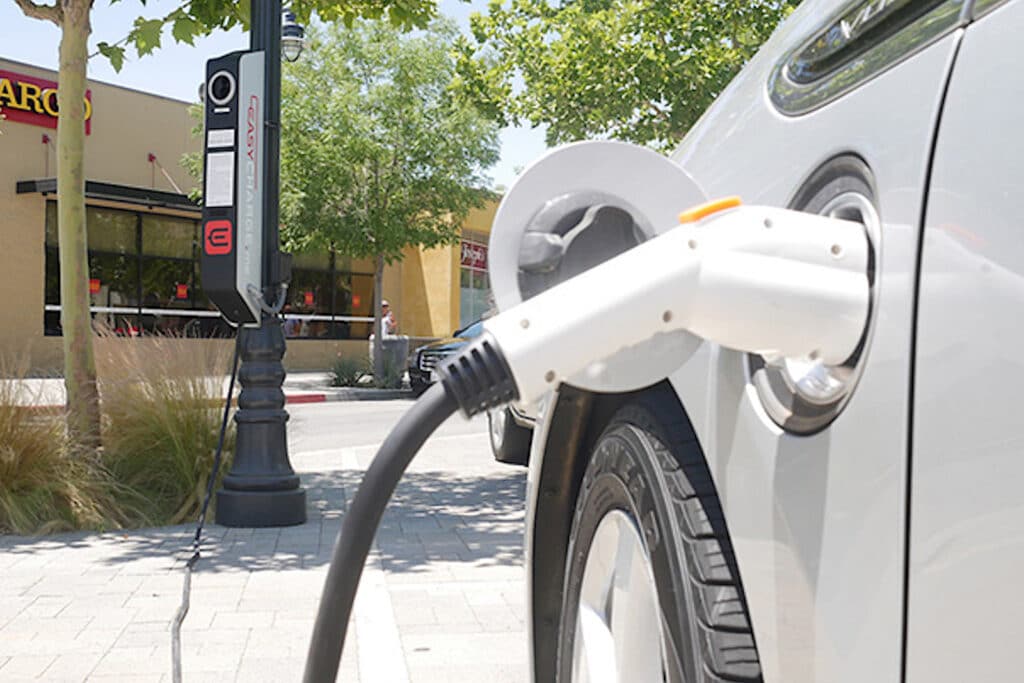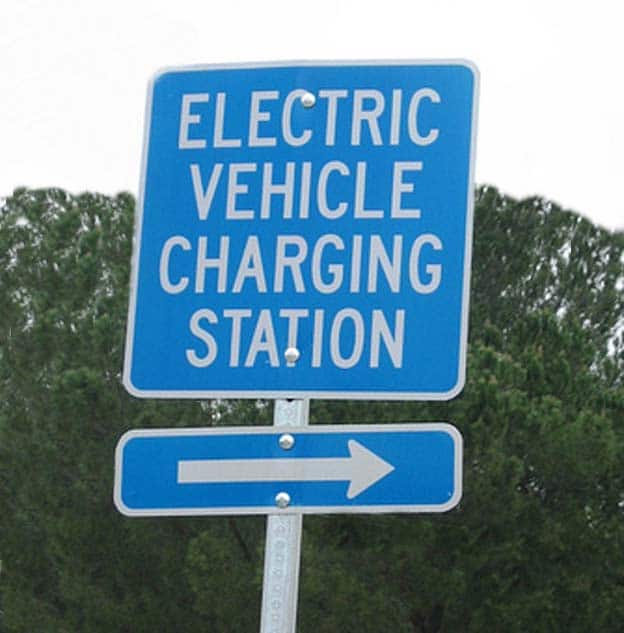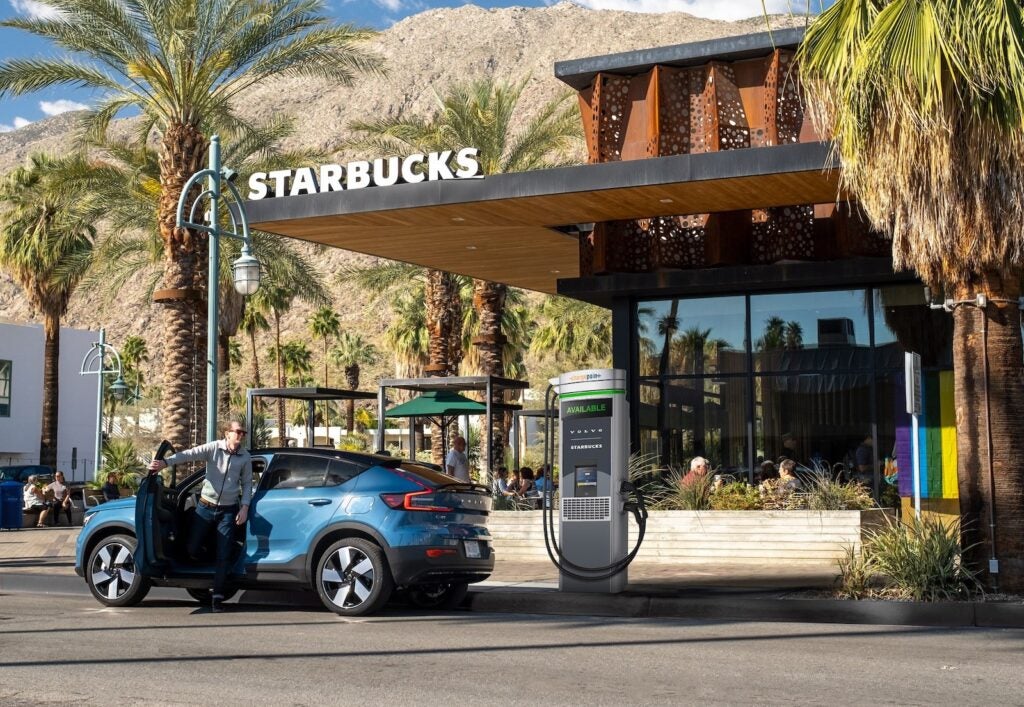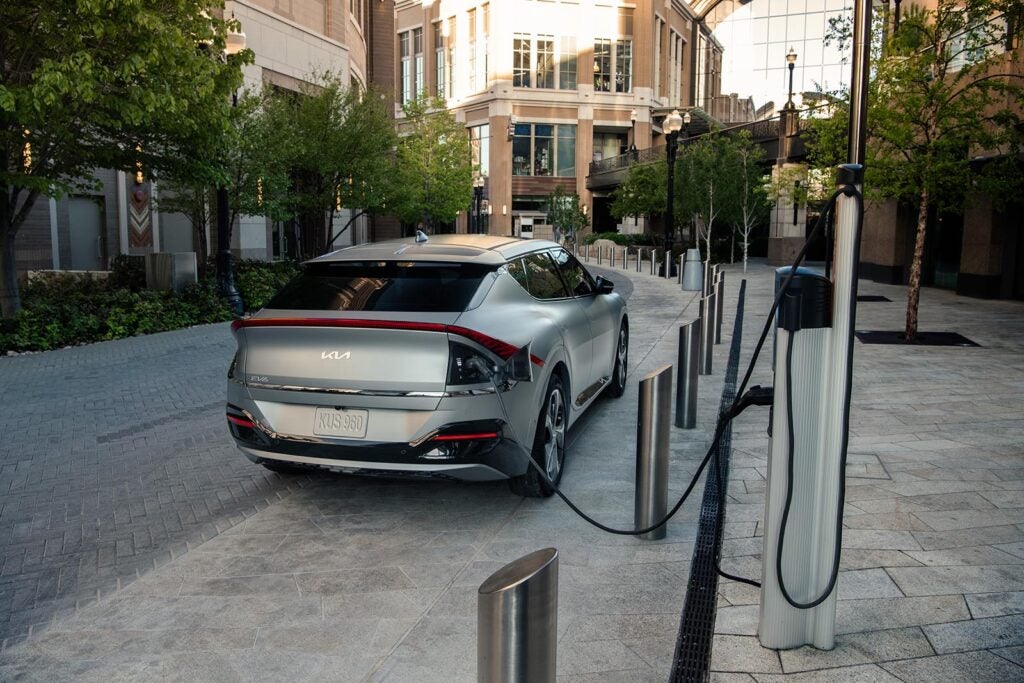More than 80% of EV charging is today done at home, according to industry data. And that’s fine when battery-electric vehicles make up a small niche of the overall U.S. vehicle market. But what happens when vehicles with internal combustion engines begin to phase out over the next two decades?

About 44 million Americans live in apartments and condominiums, according to the U.S. Census Bureau, millions more having no way to install home chargers, even though they live in standalone dwellings such as the narrow row houses of Philadelphia. What have come to be known in EV circles as “garage orphans” will need to gain access to chargers, too.
“If the infrastructure was available, I’d buy (an EV) tomorrow,” said Pat Rizzo, a researcher for an environmental organization in New York. “But it’s not there, yet, for urban dwellers,” added Rizzo, noting that he’s likely to go with a hybrid “until the infrastructure catches up.”
Startups offer potential solutions
Ironically, urban dwellers like Rizzo may be most suited to switching to electric vehicles because research shows them likely to have closer commutes and run shorter errands. The question is how to give such motorists a way to readily plug in, rather than having to drive out to where public chargers are most commonly found, in the suburbs or along major Interstate highway corridors.

Several companies are stepping in, hoping to create a solid business model while addressing that problem. That includes Dallas-based Amperage Capital.
“To address this issue, we believe that apartment residents should have access to designated home charging spaces, rather than relying on shared charging stations,” said the startup’s CEO Farrukh Malik.
Amperage is in the process of raising funds to set up a charging network specifically designed around medium-sized apartment complexes that might have 100 or more residences, along with their own parking structures.
Wiring up
Malik estimated his company’s approach could address the charging needs of “about 45% of U.S. apartment dwellers, or around 20 million people, based on our analysis.”
Amperage’s primary target is an older complex that would need a fair amount of work to set up a charging system. New communities can readily incorporate charging into their initial design, he explained.
Rather than simply installing chargers for apartment building owners, Amperage’s approach has it work in partnership. It covers the cost of installation — which can run into the millions of dollars, depending upon the size of the housing complex. The typical plan calls for providing chargers for about 5% to 10% of a complex’s residents, said Malik, though a facility can be wired up to add more as EV demand grows in the coming years.
A new revenue opportunity

Typically, landlords “are not in the business of providing charging,” and many can’t afford the retrofitting process, said Malik. But Amperage offers to turn this into a profit center. EV owners sign up for a specific spot equipped with a charger and pay a monthly or annual fee, the landlord getting a share of that money.
Not all apartments and condominiums can be fitted with a charging infrastructure. In many places, such dwellings lack parking structures, as do houses in older communities that don’t have driveways or garages.
That’s where Philadelphia-based Parkway Corp. could come in. The nation’s largest operator of parking lots and structures, it already serves many apartment dwellers who can’t, or prefer not to, park on the street.
Turning parking lots into charging stations
“It’s great to be able to charge at home,” but that’s not going to happen in the typical urban community, said RJ Juliano, Parkway’s chief marketing and information officer.
The company is beginning to install Level 2 chargers, the same sort of 240-volt systems typically used by homeowners, at its facilities across the U.S. and Canada. It’s also creating a proprietary, WiFi-based app that will permit EV owners to check how much of a charge their vehicles have. And such an app could be used to choose when to begin charging in communities with time-based electric rates.

“Parking, in general, should be a frictionless experience,” said Juliano. And Parkway wants to make charging equally frictionless for EV owners, both those local apartment dwellers who plug in regularly, as well as shoppers and other occasional visitors.
Companies like Amperage Capital and Parkway Corp. are betting they can turn a profit by serving as alternatives to traditional gas stations. They’re also betting they can get a financial boost from the Biden administration. The president last year outlined a goal of having 500,000 charging facilities in operation across the U.S. by 2030.
Federal funding
“If you live in an apartment building, if you don’t have a garage, if you just want to be able to charge up around town … this is where the government steps in to make sure that everybody has access to this charging,” U.S. Energy Department Secretary Jennifer Granholm said during the Climate Power conference earlier this month.
During her appearance, the former Michigan governor announced plans for $2.5 billion in federal EV charging grants. Some of that funding will help set up a charging network in rural parts of the country. Other funds will go to help urban dwellers plug in.
A variety of different options are emerging.
The City of Los Angeles is one of several experimenting with setting up street chargers. It currently operates 450 built into street lights and another 50 built into power poles. Its goal is to add another 200 annually. Similar projects could soon be underway in New York, Kansas City and several other urban communities.
In a small but growing number of locations, including several California communities, regulators are now requiring that new housing projects incorporate chargers. The Portland City Council is considering a measure that would require that all new multi-family dwellings with five or more units have the wiring to set up chargers for at least half of their parking spaces.
“There will be a day when gas vehicles are unavailable. And we need to ensure that (urban) communities are not left out of that transition and are able to fuel their vehicles,” Ingrid Fish, a planner with Portland’s Bureau of Planning and Sustainability told the Council during a discussion of the plan in January.
- SEO Powered Content & PR Distribution. Get Amplified Today.
- Platoblockchain. Web3 Metaverse Intelligence. Knowledge Amplified. Access Here.
- Source: https://www.thedetroitbureau.com/2023/03/fifty-million-apartment-dwellers-need-a-way-to-plug-in/



